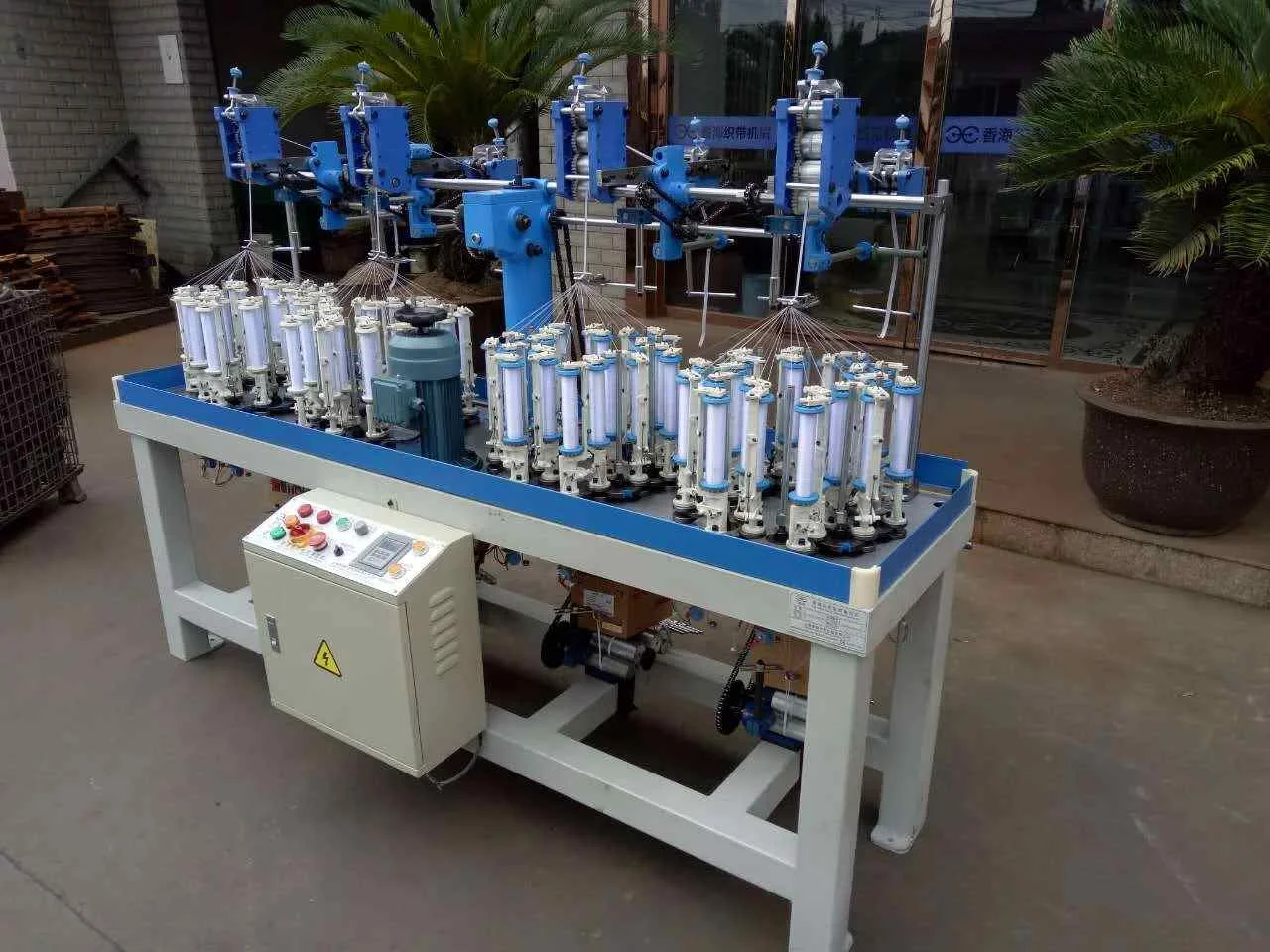A braiding machine is a mechanical device used to make fabrics that work by interweaving yarns together to create patterns and structures in textiles. Braiding machines are used in a wide range of applications, from clothing and home textiles to industry and aerospace. This article will introduce the working principle and application fields of the braiding machine in detail.

The working principle of the braiding machine can be simply described as passing the yarn through a series of loom components and interweaving the yarn together through different movement modes and operation steps to form a fabric. A braiding machine usually consists of multiple parts, including a yarn feeding device, loom components, motion control system fabric winding device, etc.
First, the yarn supply device introduces the yarn from the spindle or bobbin to the braiding machine. The yarn passes through the tension adjustment device to ensure the proper tension of the yarn. The yarn then enters loom components such as loom shuttles, loom needles, or loom combs. These weaving components interweave the yarns through different movements. For example, the shuttle of the loom weaves between the warp and weft yarns through reciprocating motion, forming the weft direction of the fabric. The loom needles move up and down to interweave the yarns together to form the warp of the fabric.
The motion control system of the braiding machine plays a vital role. It controls the movement mode and speed of the loom components, adjusts the tension and density of the yarn, and controls the pattern and structure of the fabric. Motion control systems usually consist of motors, sensors, and computer control units. The motor provides power, the sensor detects the position and state of the loom components and the yarn, and the computer control unit adjusts the movement mode and speed of the loom components according to the feedback signal from the sensor.
The application field of braiding machines is very wide. In the field of clothing, braiding machines are used to manufacture various types of fabrics, such as cotton, silk, wool, etc. They can produce fabrics with different textures, patterns, and colors to meet the needs of different clothing designs. In the field of home textiles, braiding machines are used to make bedding, curtains, rugs, etc. These products usually need to have good texture and decorative effects, braiding machines can meet these requirements.
In addition to clothing and home textiles, braiding machines have a wide range of applications in industry and aerospace. In the industrial field, braiding machines are used to manufacture industrial fabrics, such as filters, conveyor belts, protective materials, etc. These fabrics usually need to have special properties, such as wear resistance, high-temperature resistance, corrosion resistance, and so on. The braiding machine can produce fabrics that meet these performance requirements according to different materials and process requirements.
In aerospace, braiding machines are used to make composite materials. A composite is a material consisting of fiber reinforcement and a matrix material that is lightweight, high-strength, and corrosion-resistant. The braiding machine can weave fiber-reinforced materials into predetermined shapes and structures, and then combine them with matrix materials to form composite materials. These composite materials are widely used in structural parts and components of aerospace vehicles, such as wings, fuselages, rudder surfaces, etc.
In summary, a braiding machine is a mechanical device used to make fabrics that work by interweaving yarns together to form patterns and structures in textiles. Braiding machines are used in a wide range of applications, from clothing and home textiles to industry and aerospace. With the continuous advancement of science and technology, the performance and functions of braiding machines are also continuously improved, bringing more possibilities for textile manufacturing in various fields.
https://www.yeeyuan.net/The-working-principle-and-application-field-of-braiding-machine.html